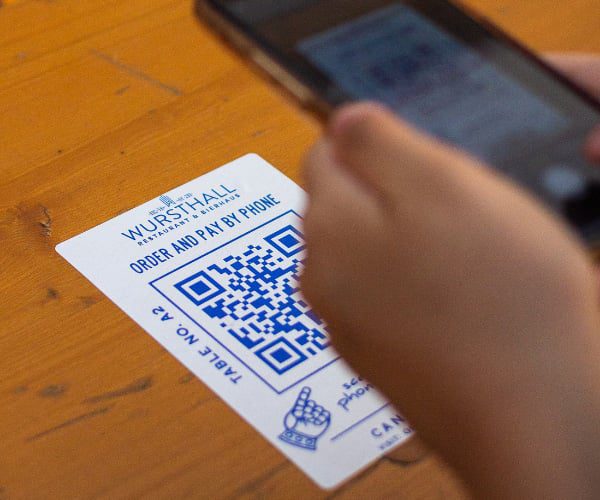QR codes have received a bad rap over the years. Although they’ve been the brunt of many a marketing joke, we think it’s a little unfair to rag on the technology.
But as we’ve reviewed, QR codes just may have been ahead of their time. Technically invented in the 90s, it wasn’t until the mid-2010s when the technology was used by marketers. And if you remember the personal tech landscape back then, not everyone had the ability to interact with these codes.
Now, customers use their smartphones to do just about everything. A decade ago, we were leery about swapping financial information on the web, let alone a phone. These days, we use apps to pay back friends for a meal, scan personal checks, and track our spending habits. So, what’s the point? That people are comfortable with personal tech—and they’re already empowered to engage with your company via smartphone.
Yeah, yeah. We hear you in the back, asking “Aren’t QR codes just a fancy way to drive consumers to websites?” Sure, they are. But they can do much more. Brands can direct customers to content and drive donations. They can boost views and downloads. And they can give consumers a chance to engage even deeper with your brand. To help illustrate the power of the QR code, let’s review some ways you can use them in marketing campaigns.
Boost brand identity
QR codes can impact retention, loyalty, and brand advocacy. By providing creative, convenient ways to use your codes, you can reach the right people on their own terms. And it’s not all black and white these days. Brands can now customize QR code designs, including their colors and CTAs, and frames. After personalizing your QR code to fit your brand, you can then drive traffic to your website, link them to Google Maps, or send them to a social media account page.
It’s no surprise that Taco Bell—resident purveyor of wacky, tongue-in-cheek campaigns—has seen success with QR code marketing. For example, to advertise its Cantina Bowl, the fast-food chain whipped up a branded QR code made of lemons and avocados. The codes link to information about the new menu and the chef behind the gourmet-inspired bowls and burritos.
Increase brand transparency
QR codes can help drive brand transparency. A 2016 study found that 94% of consumers say it’s important that manufacturers and brands are transparent about what’s in their food and how it’s made. By placing codes on packages, wrappers, and containers, brands can make it simple for consumers to click through to more product information. This transparency not only promotes engagement—but also builds trust and improves brand reputation.
Several years ago, Hershey was the first company to adopt the Grocery Manufacturers Association SmartLabel program, which enabled users to scan on-product codes to learn about nutritional information. When scanned, the technology directed curious consumers to pages that contained nutritional values, ingredients, product usage, and other brand information.
Increase customer engagement
Empowering customers to pay on their own terms not only makes life easier, it can help increase engagement. QR codes can eliminate the need for consumers to carry cash or cards—and enable convenient, contactless point-of-sale transactions. Companies like PayPal allow consumers to do away with cash and credit cards when making payments. This touch-free payment simply requires a buyer and seller to scan each other’s QR code. And from restaurants to retailers, PayPal is empowering small businesses to engage with their customers.
For example, nail salons and barbershops can use them to set up appointments—which helps create operational efficiencies. Businesses can place codes in their store windows so customers can use them to be redirected to brand or payment pages. They can also place codes on to-go items to facilitate quick payment for pickup. Finally, brands can attach QR codes to packages that are being delivered and require the delivery person to get customers to scan codes (and add tips for delivery).
Generate more leads
Scanning a QR code can take users to a landing page that prompts them to sign up for a piece of gated content, register for a webinar, or more. This lead gen strategy is no different than the tried-and-true landing page marketing tactic that’s been a digital marketing standby for years. However, instead of reaching people with targeted ads on Google, YouTube, or Facebook, marketers can reach their consumers directly in the real-world. Plus, landing pages are just the start of your lead gen possibilities.
Brands can also link to video campaigns, which provide users with immersive, engaging content once they click on QR codes. For example, L’Oreal partnered with Glamour to provide free rides to passengers during New York Fashion Week. The campaigns placed QR codes in taxi cabs which linked to videos of Lancôme and Yves Saint Laurent product lines. By combining video content and QR codes, L’Oreal saw downloads to their app increase by nearly 80% during the five-day campaign, with nearly 1 in 3 users snapping a tag.
Download the QR Code Marketing eBook about adding value to the customer journey thru the use of QR Codes.
